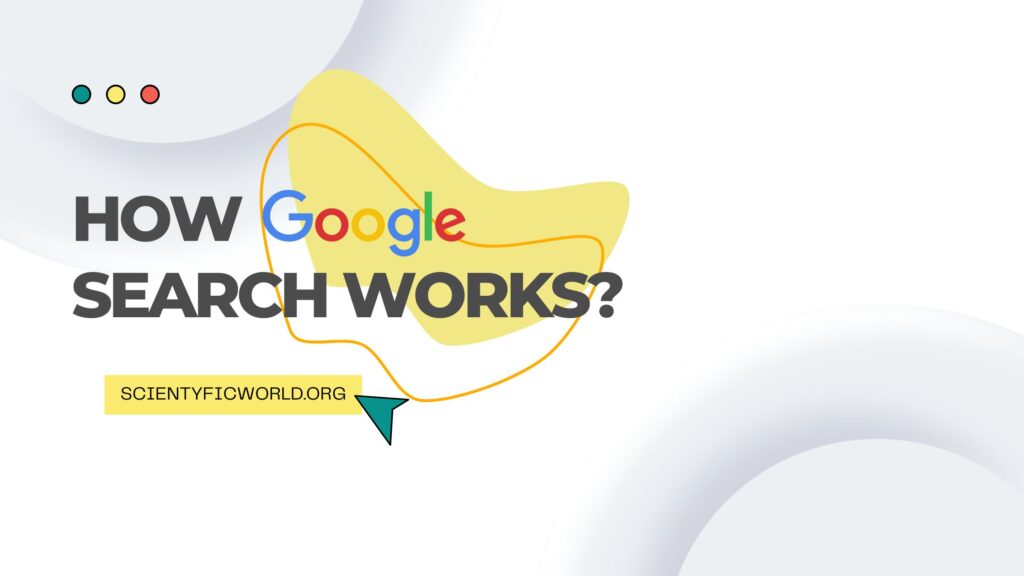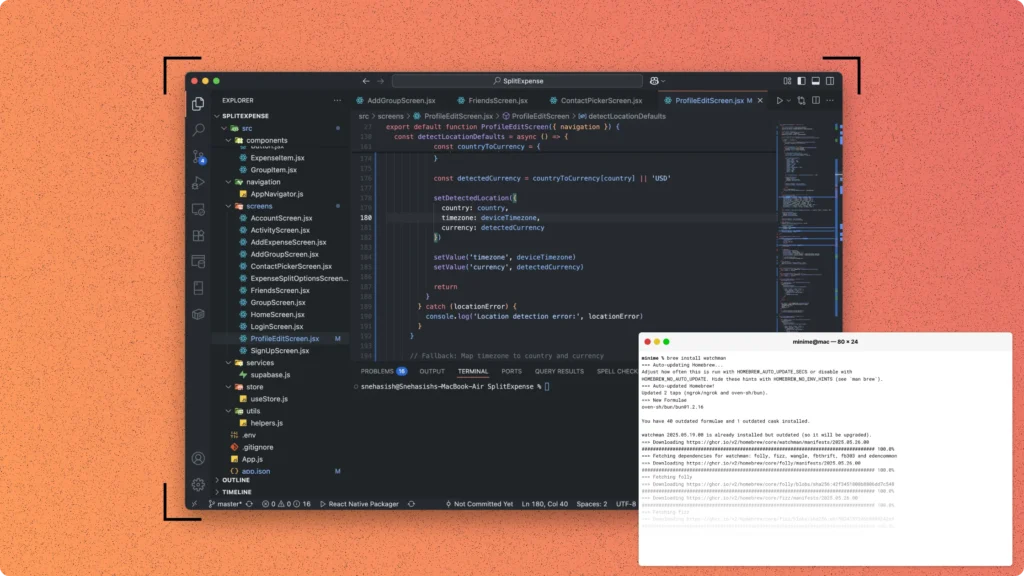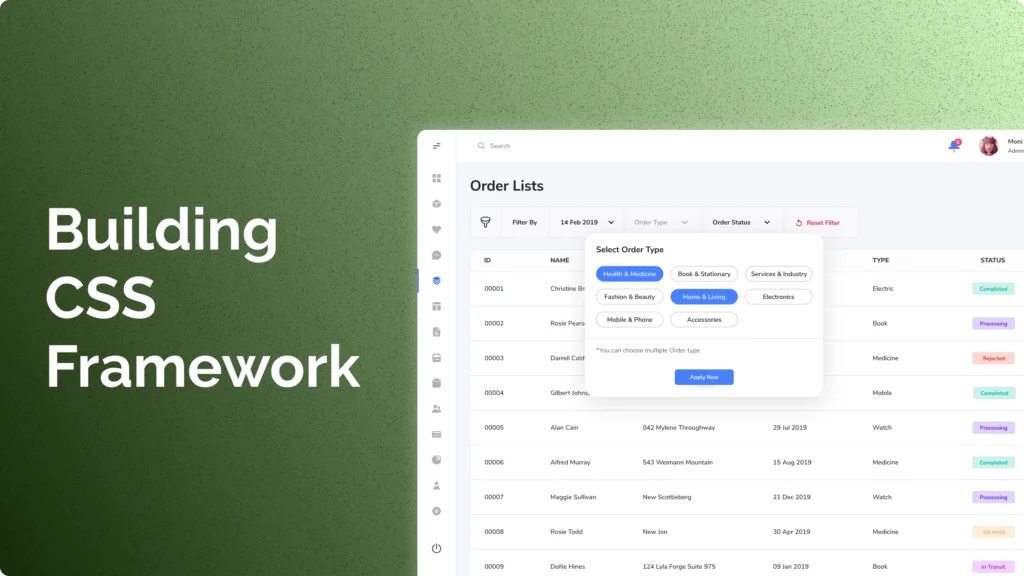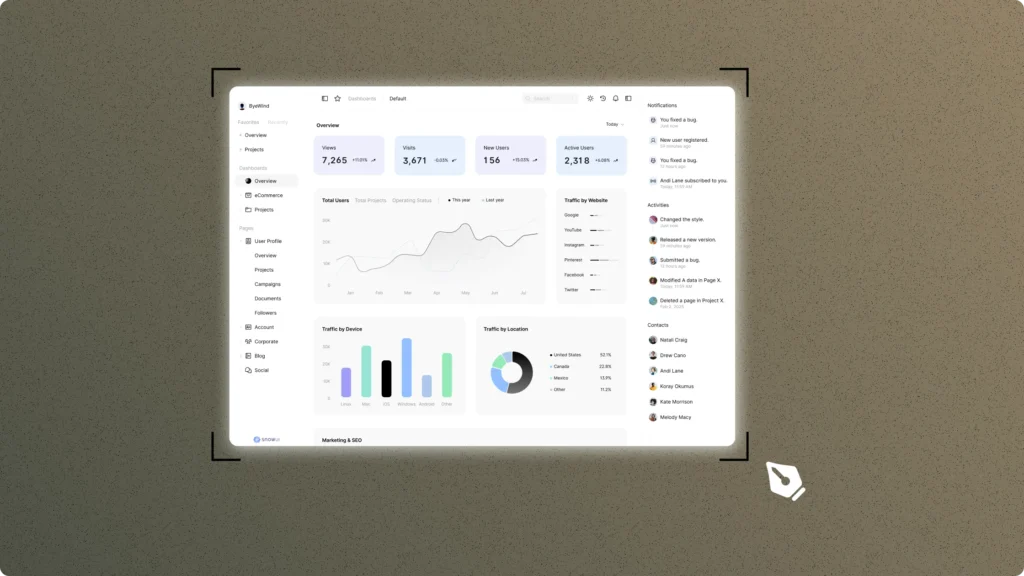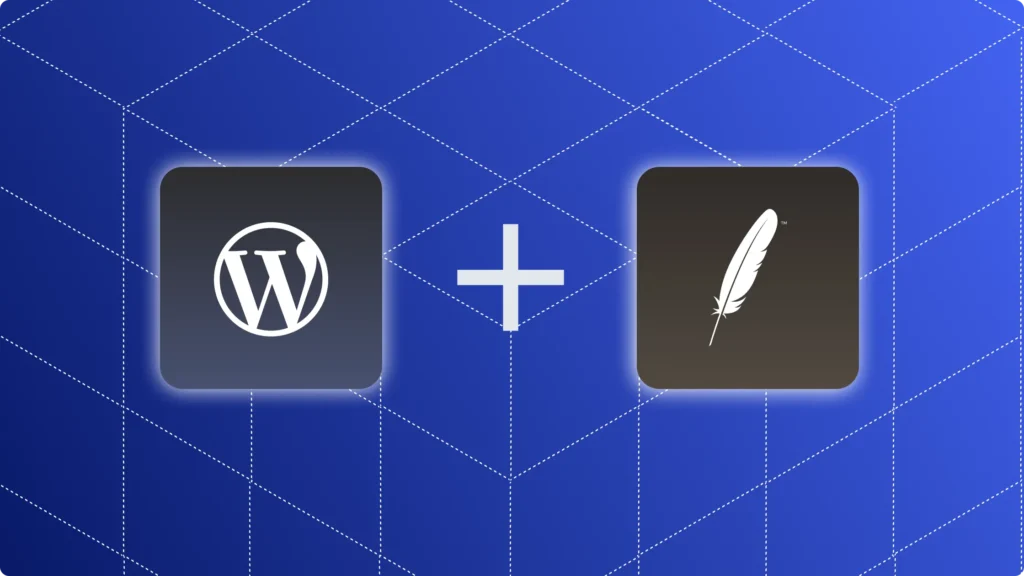Most people use Google every day without realizing how complex and amazing it is. The search engine has become so ubiquitous that we often take it for granted, but it’s worth taking a closer look at how it works and what it can do.
Google is a massive database of web pages and other online content. When you type a query into the search bar, Google uses its algorithms to scour the internet and find the best possible results to match your query. It then ranks those results by relevance and displays them on the search results page.
You might think that you can just type anything into the search bar and get relevant results, but that’s not always the case. Google’s algorithms are constantly evolving to become more sophisticated and to better understand the intent behind queries. As a result, the search engine is getting better and better at returning relevant results.
There’s a lot more to Google than just the search engine. The company also offers a suite of productivity tools, such as Gmail and Google Docs, as well as popular platforms like YouTube and Google Maps. But at its core, Google is still a search engine, and it’s that core competency that continues to drive the company’s success.
So, in this blog, I’m gonna talk about
How does Google Search work?
I hope you’ll enjoy this blog and find something valuable information from it.
Quick Overview:
Google Search, also known as Google Web Search or simply Google, is a web search engine developed by Google. It is the most-used search engine on the World Wide Web, handling more than three billion searches each day.
Google Search uses a proprietary algorithm called PageRank to rank websites in its search engine results. PageRank is a link analysis algorithm that assigns a numerical weighting to each element of a hyperlinked set of documents, such as the World Wide Web, with the purpose of “measuring” its relative importance within the set. The algorithm may be applied to any collection of entities with reciprocal quotations and references. The numerical weight that it assigns to any given element E is referred to as the PageRank of E and denoted by PR(E).
The purpose of Google Search is to hunt for text in publicly accessible documents offered by web servers and return the results to the user in the form of a search engine results page (SERP).
When you enter a query in the search box (sometimes called the Google search bar), Google uses an algorithm to select the best matching pages for your query and displays them in the SERP. The algorithms used by Google are constantly updated and improved, which is why you may see different results when you search for the same thing at different times.
The main aim of the Google search algorithm is to provide the most relevant and useful results for the user’s query. However, there are other factors that come into play, such as the freshness of the content and the number of times a particular page has been shared on social media.
Google also uses what is called latent semantic indexing (LSI) to help match your query with relevant documents. LSI is a way of analyzing relationships between terms and concepts in order to understand the meaning of a piece of text.
Google Search relies heavily on links to determine which websites are the most relevant and popular. This is why link building is so important for SEO.
When you search for something on Google, the results you see are not just based on the content of the web pages, but also on the links between them. Google uses these links to determine the importance of a website and the popularity of its pages.
The more links a website has, the more popular it is, and the more likely it is to rank higher in the search results.
However, not all links are equal. Google puts more weight on links from websites that are popular and trustworthy.
Now, let’s deep dive into our topic. Here you could understand how the search engine actually shows us accurate results. It is a long process and yes obviously can’t be covered in a single blog. Even though I’ve tried to cover up whatever I know and whatever I could into a single article.
Crawling – The art of searching and finding out pages.
Crawling is the process of looking for new or changed pages on websites. A “crawler” is a program that starts with a list of URLs from a seed set and then crawls through the hyperlinks found on those pages to find new pages.

Crawling can be a useful way to find new or changed content on websites. For example, if you are looking for new blog posts about a particular topic, you can use a crawler to find new pages that have been recently published. Crawling can also be used to find changed content, such as new product pages on an e-commerce site, or new profile pages on a social network.
There are a few different ways to crawl a website. The most common is to start with a list of seed URLs and then follow the hyperlinks on those pages to find new pages. This is called a breadth-first crawl. Another common method is to start with a list of seed URLs and then crawl through the hyperlinks on those pages, but only follow links that are relevant to the topic you are interested in. This is called a depth-first crawl.
Crawling can be a time-consuming process, so it is important to have a well-designed plan before you start. Otherwise, you may find yourself crawling through a lot of irrelevant pages, or missing out on important pages.
Here are a few tips for designing a good crawling strategy:
- Start with a small number of seed URLs. It is better to start with a small number of well-chosen URLs than a large number of randomly chosen URLs.
- Think about the structure of the website you are crawling. If the website has a well-defined structure, such as a directory of pages, you may be able to use that structure to your advantage.
- Think about the content you are interested in. If you are only interested in pages that contain certain keywords, you can use that information to filter the pages that you crawl.
- Don’t crawl too frequently. Crawling too often can put a strain on the server and may result in your IP address being banned.
- Keep track of the pages you have already crawled. This will help you avoid crawling the same page more than once.
Indexing – The process of storing those relevant pages on a database.
When a user enters a query into a search engine, the search engine scours its corpus of billions of documents and does two things: first, it identifies which documents are relevant to the user’s query; second, it ranks those documents according to their relevance.
The first step of ranking is the identification of relevant documents, also known as retrieval. The process of retrieval begins when the user enters a query and submits it to the search engine. The search engine then scans its index, which is a database of all the documents in its corpus, looking for documents that are relevant to the user’s query.
The second step of ranking is to rank the documents that have been retrieved according to their relevance. The search engine does this by looking at a number of factors, including the number of times a particular term appears in the document, the location of the term in the document, and the number of other documents that link to the document. The search engine then ranks the documents according to their relevance and displays the results to the user.
The process of retrieval and ranking is known as indexing. The purpose of indexing is to make the search engine’s job of finding relevant documents and ranking them by relevance easier and faster. Indexing is a critical part of how search engines work, and it is an area of active research.
Processing – The process of making sense of information in your query to provide you with accurate information.
When you ask a question about your favourite search engine, have you ever wondered how the search engine provides you with accurate information? The answer is Processing.
Processing is the process of making sense of information in your query to provide you with accurate information. This process is important for search engines because it allows them to provide you with accurate and relevant results.
What are Google Algorithms?
Google algorithms are a set of rules that determine how Google indexes and ranks websites in their search engine result from pages (SERPs). There are over 200 different ranking factors that go into these algorithms, and they are constantly changing and evolving to adapt to the latest trends in search. Some of the most well-known algorithms include the PageRank algorithm, which was developed by Google co-founder Larry Page, and the Hummingbird algorithm, which was introduced in 2013.
The PageRank algorithm is what originally made Google the most popular search engine. It looks at the number and quality of links that point to a website as a way to determine how important and relevant that site is. The Hummingbird algorithm is designed to better understand the user’s intent when they perform a search and return results that are more relevant to what they are looking for.
These are just two of the algorithms that Google uses to index and rank websites. There are many others that are constantly being updated and tweaked to ensure that Google is providing the best possible results for their users.
Google Search uses algorithms to process queries:
Over the years, Google has made more than 500 algorithm changes. That’s an average of nearly 2 per day!
While most are small and unnoticeable, every so often, Google will release a major algorithmic update (like Panda and Hummingbird) that will have a significant impact on search results.
So how does Google decide which changes to make and when?
The answer is: it depends.
There is no set schedule or process for algorithm updates. Instead, the Google search team is constantly testing and tweaking the algorithms to try and improve the quality of search results.
Sometimes they’ll make a change that has a major impact on the search results (like Panda or Hummingbird), while other times they’ll make a small change that only affects a specific type of query (like the Knowledge Graph update).
It all depends on what they’re trying to achieve with the update.
Here’s a quick overview of how Google algorithms work:
When you type a query into the Google search bar, the algorithms scan through billions of documents and use over 200 signals to determine which results are the most relevant to your query.
The algorithms then rank the results in order from most relevant to least relevant.
The most relevant results are displayed on the first page of the search results, with the remaining results being displayed on subsequent pages.
Google is constantly tweaking the algorithms to try and improve the quality of the search results.
The goal is to provide the most relevant and useful results for each query, regardless of the type of device the user is using.
One of the main ways they do this is by using what’s called Latent Semantic Indexing (LSI).
LSI is a way of understanding the relationship between words and concepts.
It looks at the co-occurrence of words within a document to determine the meaning of the document as a whole.
For example, if you were to search for “pizza”, Google would use LSI to understand that you’re looking for a type of food and not the Italian city.
This is how Google is able to provide relevant results for queries even when the user doesn’t use traditional search keywords.
LSI is just one of the many signals that the algorithms used to determine the relevancy of a document.
Other signals include:
- The freshness of the content
- The number of times the content has been shared on social media
- The number of inbound links to the page
- The user’s search history
- The user’s location
All of these signals are used to help the algorithms determine which results are the most relevant to the user’s query.
The algorithms are constantly being updated and tweaked to try and improve the quality of the search results.
Google doesn’t release details on every single algorithm update, but they do announce major updates.
Some of the most notable algorithm updates include:
Panda: This update was designed to weed out low-quality content from the search results. It had a major impact on sites with thin content or a lot of advertising.
Hummingbird: This update was designed to better understand the user’s intent. It was a major update to the algorithms and helped Google to provide more relevant results for long-tail keywords.
Pigeon: This update was designed to improve the local search results. It had a major impact on directories and local listings.
Mobile: This update was designed to improve the mobile search experience. It had a major impact on sites that were not optimized for mobile devices.
Google is constantly making changes to the algorithms in an effort to improve the quality of the search results.
The goal is to provide the most relevant and useful results for each query, regardless of the type of device the user is using.
Googles Ranking Logic:
Google’s ranking logic is an algorithm that ranks web pages based on different ranking factors like quality, relevance and other parameters. The algorithm is constantly changing and evolving, so it’s hard to say exactly how it works. However, we do know that Google takes into account a variety of factors when determining which pages to rank first in search results.
Some of the factors that are thought to be used in Google’s ranking algorithm include:
- The quality of the content on the page
- The relevance of the keywords on the page to the user’s search query
- The number and quality of inbound links to the page
- The loading speed of the page
- The mobile-friendliness of the page
- User engagement metrics (e.g. click-through rate, time on site, etc.)
These are just a few of the potential ranking factors that Google could be using. It’s important to note that no one knows for sure exactly how Google’s algorithm works, as the company keeps its methods a closely guarded secret.
However, by understanding the different ranking factors that are thought to be used, you can optimize your website and content to try to improve your chances of ranking high in search results.
Serving – Identifying and displaying results that are most useful to you.
Search results are based on many different factors, including the content of your site, other sites linking to yours, and the overall popularity of your site. However, there are a few things you can do to ensure that your site’s search results are as useful as possible to you and your visitors.
One of the most important things you can do is to make sure that your site’s content is relevant to your audience. If you’re a blog about parenting, for example, you’ll want to make sure that your posts are relevant to parents. You can do this by including keywords in your titles and tags that are related to parenting.
Another thing you can do to improve your site’s search results is to encourage other websites to link to yours. This is called backlinking, and it’s a great way to improve your site’s visibility. When you have other websites linking to yours, it tells search engines that your site is a valuable resource, and they’ll be more likely to rank it higher in their results.
Finally, you can also improve your site’s search results by making sure that it’s popular. The more people who visit your site, the more likely it is that search engines will rank it higher. You can increase your site’s popularity by promoting it on social media, submitting it to directories, and creating high-quality content that people will want to share.
By following these tips, you can ensure that your site’s search results are as useful as possible to you and your visitors.
Now, let’s go a little bit out of the topic. Let’s see how you can use google search effectively.
Use Google Search effectively.
Most people use Google without really knowing how to use it effectively. This guide will help you get the most out of Google Search.
Google is the most popular search engine in the world, handling over 3.5 billion searches each day. But despite its popularity, many people don’t know how to use Google effectively.
Here are some tips to help you get the most out of Google Search:
- Use quote marks to search for an exact phrase
If you want to search for an exact phrase, enclose it in quotation marks. For example, if you want to find out about the history of the United States, you would search for “history of the United States.”
- Use a minus sign to exclude terms from your search
If you want to exclude a term from your search, use a minus sign. For example, if you want to find information about the history of the United States but you don’t want results about the Civil War, you would search for “history of the United States” -Civil War.
- Use an asterisk as a wildcard
If you want to find a word but you’re not sure of the spelling, you can use an asterisk as a wildcard. For example, if you want to find information about the author of 1984, you could search for “George Orwell * 1984.”
- Use the word “OR” to find results that include either of the two terms
If you want to find results that include either of two terms, use the word “OR.” For example, if you want to find information about the history of the United States or the history of Canada, you would search for “history of the United States OR Canada.”
- Use Google’s Advanced Search
Google’s Advanced Search is a great way to find exactly what you’re looking for. Advanced Search allows you to narrow your search by a number of different criteria, including date, language, and file type.
To use Advanced Search, go to Google’s main page and click on the “Settings” icon. Then, click “Advanced Search.”
- Use Google’s search operators
Google’s search operators are a great way to narrow your search and find exactly what you’re looking for. Search operators are special characters that can be added to a search to filter the results.
For example, the search operator “site:” allows you to search only a specific website. So, if you want to find information about the history of the United States on the website history.com, you would search for “history of the United States site:history.com.”
- Use Google’s Wonder Wheel
Google’s Wonder Wheel is a great way to visually explore related terms for your search. To use the Wonder Wheel, go to Google’s main page and enter a search term. Then, click on “Show Options” and “Wonder Wheel.”
- Use Google’s Related Searches
Google’s Related Searches is a great way to find other terms that are related to your search. To use Related Searches, go to Google’s main page and enter a search term. Then, scroll down to the bottom of the page and click on “Related Searches.”
- Use Google’s Timeline
Google’s Timeline is a great way to find information about a specific time period. To use Timeline, go to Google’s main page and enter a search term. Then, click on “Show Options” and “Timeline.”
- Use Google’s Street View
Google’s Street View is a great way to get a closer look at a specific location. To use Street View, go to Google’s main page and enter a search term. Then, click on “Maps” and “Street View.”
Conclusion:
So this was all about Google Search. I hope this blog is helpful and you get something to know from it. If yes, share this piece of content with your friends and fellow bloggers. Maybe it could help them too.
See you in the next blog.
